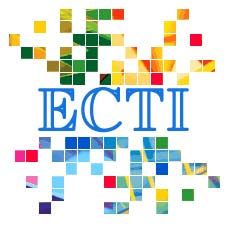Wave probabilistic functions, entanglement and quasi-non-ergodic models
Main Article Content
Abstract
The paper presents the theory of wave probabilistic models together with their important features like inclusion-exclusion rule, product rule and entanglement. These features are athematically described and the illustrative example is shown to demonstrate the possible applications of the theory. The presented theory can be also applied for modeling of quasi-non-ergodic probabilistic systems. First of all we show the new methodology on binary non-ergodic time series. The theory is extended into M-dimensional non-ergodic n-valued systems with linear ergodicity evolution that are called quasi-on-ergodic probabilistic systems.
Article Details
This journal provides immediate open access to its content on the principle that making research freely available to the public supports a greater global exchange of knowledge.
- Creative Commons Copyright License
The journal allows readers to download and share all published articles as long as they properly cite such articles; however, they cannot change them or use them commercially. This is classified as CC BY-NC-ND for the creative commons license.
- Retention of Copyright and Publishing Rights
The journal allows the authors of the published articles to hold copyrights and publishing rights without restrictions.
References
[2] Raymer M.G.: Measuring the quantum mechanical wave function, Contemporary Physics, 1997, volume 38, number 5, pages 343-355.
[3] Radon J.: Uber die Bestimmung von Funktionen durch ihre Interalwerte langs gewisser Mannigfaltigkeiten. Berichte Sachsiche Akademieder Wissenschaften, Leipzich, Mathematisch- Physikalische Klasse, 69:262-277,1917.
[4] Bogdanov Yu. I.: The sixth Hilbert's problem and the principles of quantum informatics, Institute of Physics and Technology, Russian Academy of Sciences [http://arxiv.org/ftp/quantph/papers/0612/0612025.pdf]
[5] Clifton R.: Complementarity between Position and Momentum as a Consequence of Kochen-Specker Arguments [http://eprintweb.org/S/article/quantph/9912108]
[6] Svitek M.: Dynamical Systems with Reduced Dimensionality, Monography NNW No.6, Czech Academy of Science, 161 pages, 2006, ISBN 80-903298-6-1.
[7] Svitek M.: Probabilistic Multi-Modeling by Quantum Calculus, ICTTA'06, IEEE Conference Damascus, Syria, 2006.
[8] Deutsch D.: Quantum Theory, the Church Turing principle and the universal quantum computer, Proceedings of the Royal Society of London Series A400, 97-117, 1985.
[9] Derek F. Lawden: The Mathematical Principles of Quantum Mechanics, Dover Publication, Inc., Mineola, New York, 1995, ISBN 0-486-44223-3.
[10] Svitek M.: Complementary variables and its application in statistics, Neural Network World 3/2007, Prague, pp. 237-253.
[11] Svitek M., Novovi·cova J.: Performance Parameters Definition and Processing, Neural Network World 6/2005, pp. 567-577, 2005.
[12] Svitek M.: Theory and Algorithm for Time Series Compression, Neural Network World 1/2005, pp. 53-67, 2005.
[13] Clarke Ch. J.S., The role of Quantum Physics in the Theory of Subjective Consciousness, Mind and Matter, Vol. 5 (1), pp. 45-81, 2007.
[14] Vedral V.: Introduction to Quantum Information Science, Oxford University Press, 2006.
[15] Svitek M.: Wave probabilistic models, Neural Network World 5/2007, pp. 469-481, 2007.
[16] Svitek M.: Quantum System Modelling, International Journal on General Systems, Vol. 37, No.5, pp. 603-626, 2008.
[17] Svitek, M.: Wave probabilities and quantum entanglement, Neural Network World 5/2008, pp. 401-406, 2008.
[18] Khrennikov A.: Quantum nonlocality or nonergodicity? A critical study of Bell's arguments, 2008 [ http://arxiv.org/abs/quant-ph/0512178]
[19] Summhammer J.: Neutron interferometric test of the nonergodic interpretation of quantum mechanics, Il Nuovo Cimento, 103 B, 1989, pp. 265-280.


